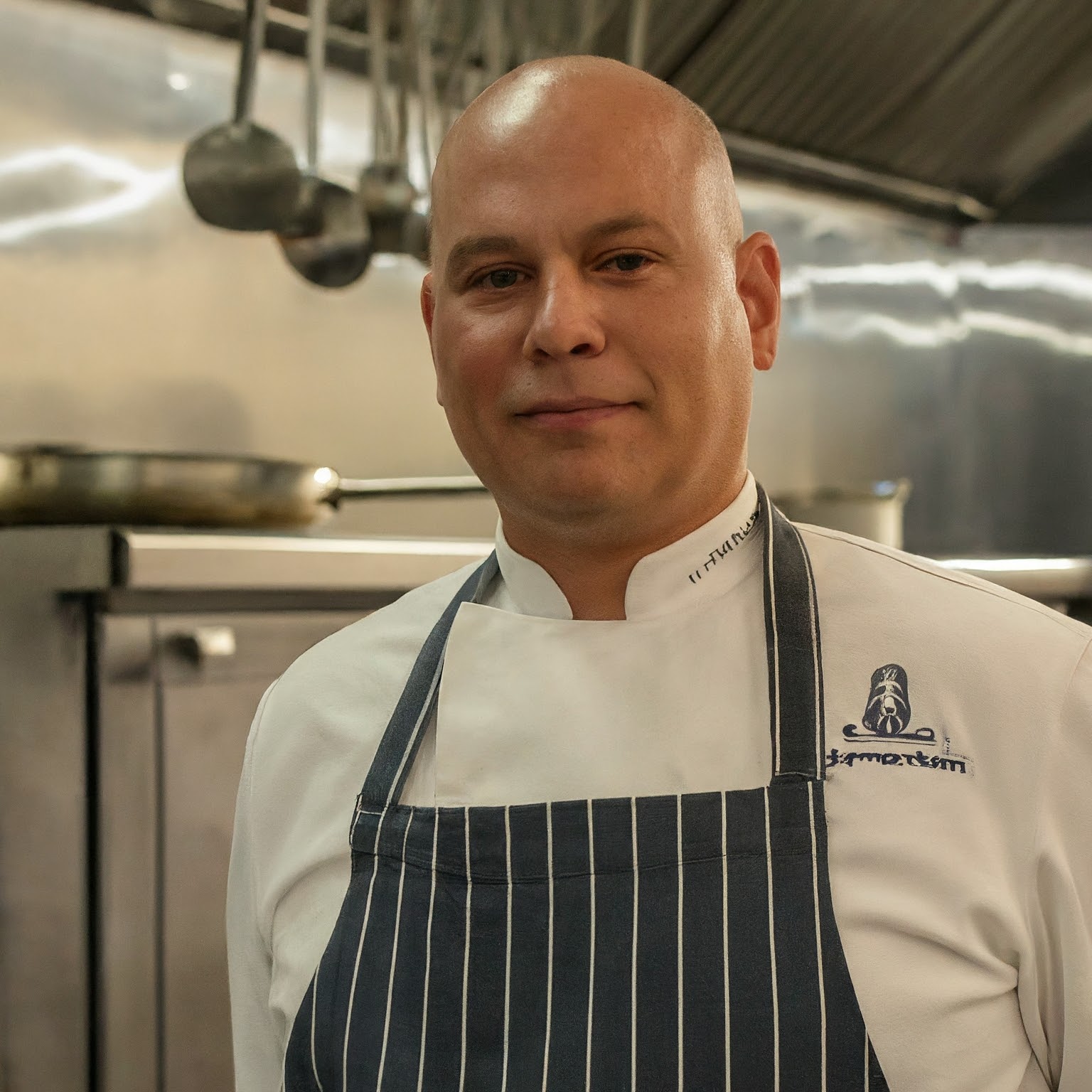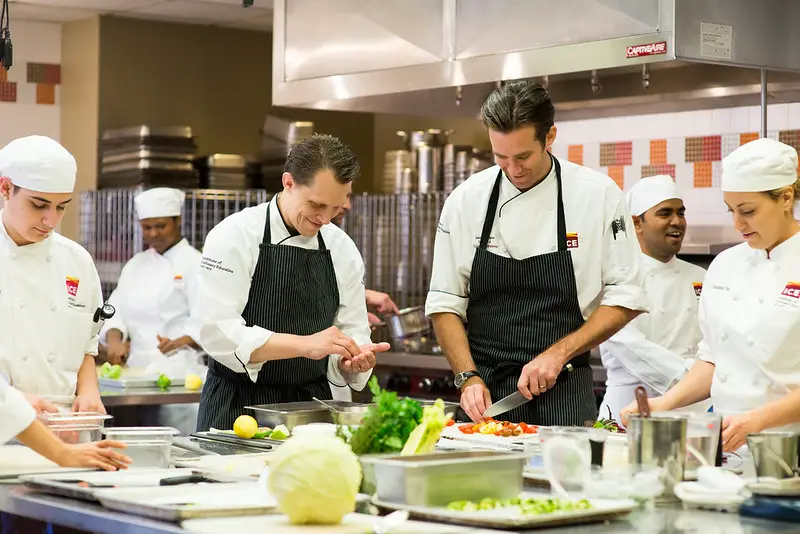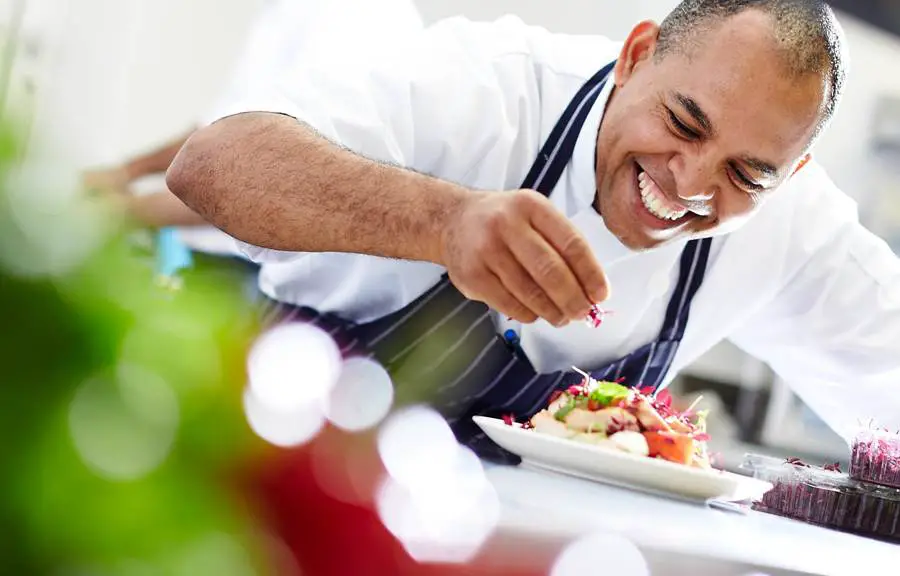
An executive chef
The culinary arts are constantly evolving, driven by innovation and creativity. Executive chefs, at the helm of this transformation, play a crucial role in pioneering new techniques, embracing technological advancements, and setting trends that redefine the dining experience.
This article explores the latest innovations in culinary arts from the perspective of executive chefs, highlighting how they shape and influence the industry.
Introduction
In the competitive world of gastronomy, staying ahead of the curve is essential. Executive chefs are tasked with not only creating exceptional dishes but also integrating the latest innovations to enhance efficiency, sustainability, and customer satisfaction.
These innovations range from advanced cooking techniques and cutting-edge kitchen technology to sustainable practices and global culinary trends.
Understanding these developments from an executive chef’s perspective offers valuable insights into the future of culinary arts.
Key Takeaways
- Advanced Cooking Techniques: Embracing sous-vide, molecular gastronomy, and fermentation.
- Kitchen Technology: Utilizing smart kitchen appliances, automation, and kitchen management software.
- Sustainability: Implementing farm-to-table concepts, reducing food waste, and sourcing locally.
- Global Influences: Incorporating diverse culinary traditions and fusion cuisine.
- Customer Engagement: Enhancing the dining experience through personalized menus and interactive dining.
Table Chart: Innovations in Culinary Arts
| Innovation | Description |
|---|---|
| Advanced Cooking Techniques | Techniques such as sous-vide, molecular gastronomy, and fermentation that enhance flavor and texture. |
| Kitchen Technology | Smart kitchen appliances, automation, and software that streamline kitchen operations and improve efficiency. |
| Sustainability | Practices like farm-to-table sourcing, waste reduction, and local sourcing to promote environmental responsibility. |
| Global Influences | Integrating diverse culinary traditions and creating fusion dishes to offer unique dining experiences. |
| Customer Engagement | Personalized menus, interactive dining experiences, and leveraging technology to engage with customers. |
Advanced Cooking Techniques
Modern executive chefs are continually exploring and adopting advanced cooking techniques to push the boundaries of flavor and presentation. Some of the most notable techniques include:
- Sous-Vide: This method involves vacuum-sealing food and cooking it at a precise, low temperature in a water bath. Sous-vide ensures even cooking and enhances the texture and flavor of the ingredients.
- Molecular Gastronomy: By using scientific principles, chefs create innovative dishes that challenge traditional perceptions of food. Techniques such as spherification, gelification, and emulsification allow for unique textures and presentations.
- Fermentation: Embracing ancient preservation techniques, chefs use fermentation to develop complex flavors and enhance nutritional value. Fermented foods like kimchi, sauerkraut, and kombucha have gained popularity for their health benefits and unique taste.
Kitchen Technology
The integration of technology in the kitchen has revolutionized how executive chefs operate. Key technological advancements include:
- Smart Appliances: High-tech ovens, grills, and sous-vide machines that offer precise control over cooking temperatures and times, ensuring consistency and efficiency.
- Automation: Robotic kitchen assistants and automated systems that handle repetitive tasks, allow chefs to focus on creativity and innovation.
- Kitchen Management Software: Digital platforms that streamline inventory management, ordering, staff scheduling, and recipe management, improving overall kitchen efficiency.
Sustainability
Sustainability has become a critical focus for executive chefs aiming to reduce their environmental footprint and promote responsible practices. Key sustainability initiatives include:
- Farm-to-Table: Sourcing ingredients directly from local farms to ensure freshness, support local economies, and reduce carbon emissions associated with transportation.
- Food Waste Reduction: Implementing strategies to minimize waste, such as nose-to-tail cooking, repurposing leftovers, and using food scraps creatively.
- Local and Seasonal Sourcing: Prioritizing locally sourced, seasonal ingredients to reduce the environmental impact and support sustainable farming practices.
Global Influences
The globalization of cuisine has led to a fusion of culinary traditions, allowing executive chefs to create innovative and diverse menus. This involves:
- Incorporating Culinary Traditions: Integrating flavors, ingredients, and cooking techniques from various cultures to offer unique and exciting dining experiences.
- Fusion Cuisine: Combining elements from different culinary traditions to create hybrid dishes that appeal to a broad audience.
- Cultural Awareness: Understanding and respecting the origins of diverse culinary practices while adapting them to contemporary dining trends.
Customer Engagement
Enhancing the dining experience goes beyond the plate; it involves engaging customers in meaningful ways. Executive chefs are using the following strategies:
- Personalized Menus: Offering customizable menu options to cater to individual dietary preferences and restrictions.
- Interactive Dining: Creating immersive dining experiences where customers can interact with chefs, learn about the cooking process, and even participate in meal preparation.
- Leveraging Technology: Using digital platforms and social media to connect with customers, gather feedback, and promote the restaurant’s offerings.
Conclusion
The role of the executive chef is continuously evolving, driven by innovation and a commitment to excellence.
By embracing advanced cooking techniques, integrating cutting-edge technology, prioritizing sustainability, incorporating global influences, and engaging customers in new and exciting ways, executive chefs are redefining the culinary landscape.
These innovations not only enhance the dining experience but also ensure that the culinary arts remain dynamic, sustainable, and inclusive.
Key Takeaways:
- Advanced Cooking Techniques: Techniques like sous-vide and molecular gastronomy push culinary boundaries.
- Kitchen Technology: Smart appliances and automation streamline operations.
- Sustainability: Farm-to-table sourcing and waste reduction promote environmental responsibility.
- Global Influences: Fusion cuisine and diverse culinary traditions enrich menus.
- Customer Engagement: Personalized and interactive dining experiences enhance customer satisfaction.
By understanding and embracing these innovations, executive chefs can lead their kitchens to new heights, creating memorable dining experiences and setting trends that shape the future of the culinary industry.





